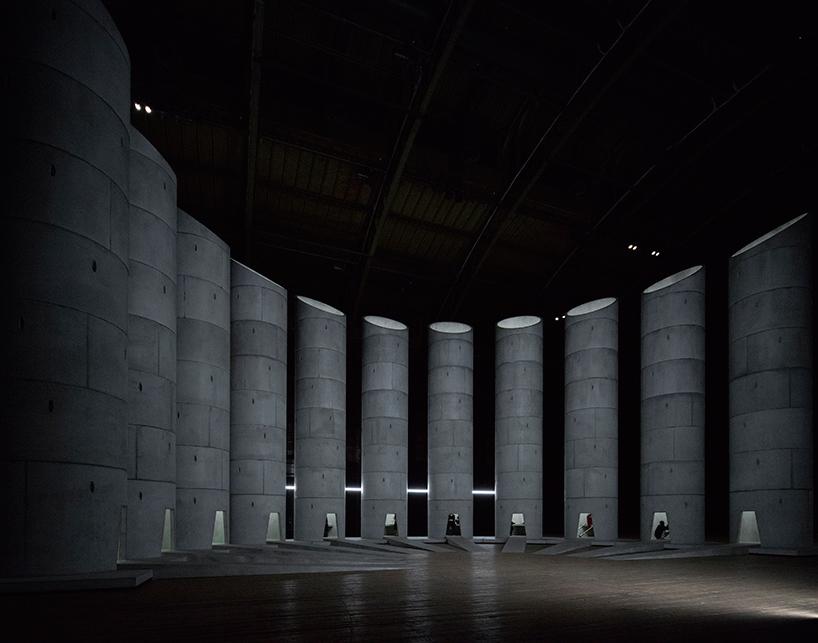“An Occupation of Loss” Supports The Expression of Grief
Taryn Simon’s “An Occupation of Loss” held at the Park Avenue Armory is an exhibit that examines the way we experience grief and how we cope with it.
September 21, 2016
In a visually and emotionally jarring display, Taryn Simon opened her latest exhibit “An Occupation of Loss” at the Park Avenue Armory last week on Sept. 13. The work’s lofty goal was to examine the way we experience grief and the systems we devise in order to deal with it. Instead of her usual text and two-dimensional visuals, Simon assembled over three dozen professional mourners from around the world to occupy 11 concrete towers arranged inside the armory.
Viewers watched from the second story of the building as performers arrived in groups of two and three, marching silently to their respective towers. An ominous drumbeat announced the beginning of the performance, and viewers were invited to descend the narrow staircase to the first floor and wander among the towers.
In the first, a Ghanaian woman sobbed, sliding first her left hand out across the concrete ledge, and then her right. A miniature soccer ball dangled on a thin cord around her neck, and an American flag balanced on her knee which fell down to the floor halfway through the piece. Next, a solitary mourner wearing a black suit and sunglasses clutched an accordion that swelled and shrank between his hands, the merriment of the song made all the more haunting by his solemn stance and expression.
Over the course of 40 minutes, viewers made their way through each tower, observing two Azerbaijani women pounding their laps and chanting, a Romanian woman pacing sorrowfully and three Greek Epirotic lamenters, among many others. Then, as abruptly as it had all begun, a warehouse door on the far left creaked open and light flooded the space.
Each encounter explored a different culture’s mourning process. While some mourners appeared stricken by grief and anguish, others performed celebratory chants or songs. Although each tower contained a very unique performance, each one had something in common: sound. No mourner was silent.
Before entering the space, every guest was offered a brief artist’s statement, which outlined the main ideas in Simon’s piece. It read, “The abstract space that grief generates is often marked by an absence of language. Individuals and communities pass through the unspeakable consequences of loss and can emerge transformed, redefined, reprogrammed.”
“An Occupation of Loss” insisted that making noise in mourning has somehow become taboo, and yet it is a vital part of the grieving process. In exposing the various ways in which different countries and cultures use songs, chants and instruments to communicate loss, Simon succeeds in underlining just how visceral and raw mourning can be. She invites her visitors to open their minds to the different ways we deal with tragedy, imploring us to bare our emotions in any way we can instead of concealing them.
“An Occupation of Loss” is on display at the Park Avenue Armory at 643 Park Ave. until Sept. 25.
Email Natalie Breuer at [email protected].
























































































































































